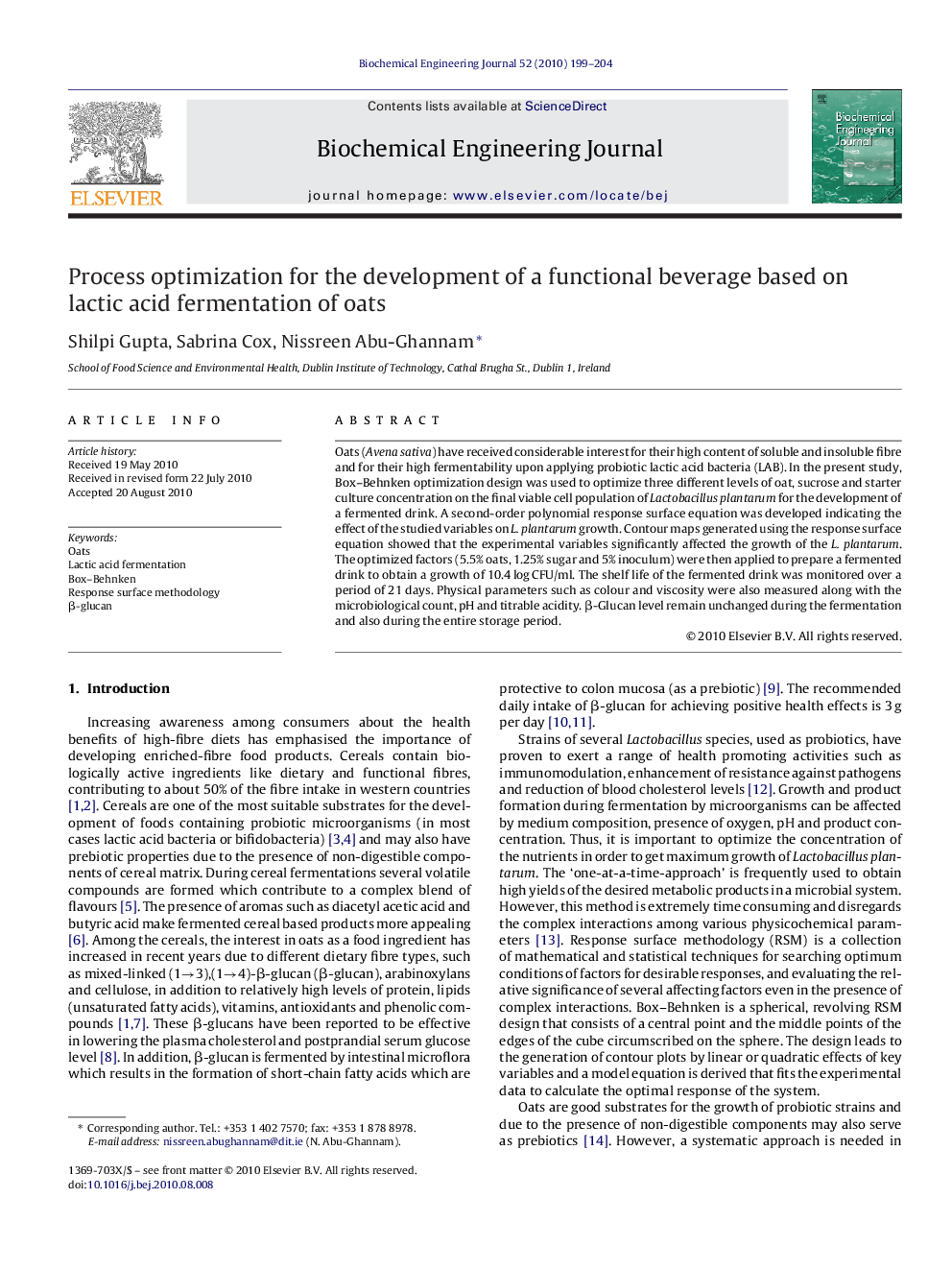| Article ID | Journal | Published Year | Pages | File Type |
|---|---|---|---|---|
| 3891 | Biochemical Engineering Journal | 2010 | 6 Pages |
Oats (Avena sativa) have received considerable interest for their high content of soluble and insoluble fibre and for their high fermentability upon applying probiotic lactic acid bacteria (LAB). In the present study, Box–Behnken optimization design was used to optimize three different levels of oat, sucrose and starter culture concentration on the final viable cell population of Lactobacillus plantarum for the development of a fermented drink. A second-order polynomial response surface equation was developed indicating the effect of the studied variables on L. plantarum growth. Contour maps generated using the response surface equation showed that the experimental variables significantly affected the growth of the L. plantarum. The optimized factors (5.5% oats, 1.25% sugar and 5% inoculum) were then applied to prepare a fermented drink to obtain a growth of 10.4 log CFU/ml. The shelf life of the fermented drink was monitored over a period of 21 days. Physical parameters such as colour and viscosity were also measured along with the microbiological count, pH and titrable acidity. β-Glucan level remain unchanged during the fermentation and also during the entire storage period.
